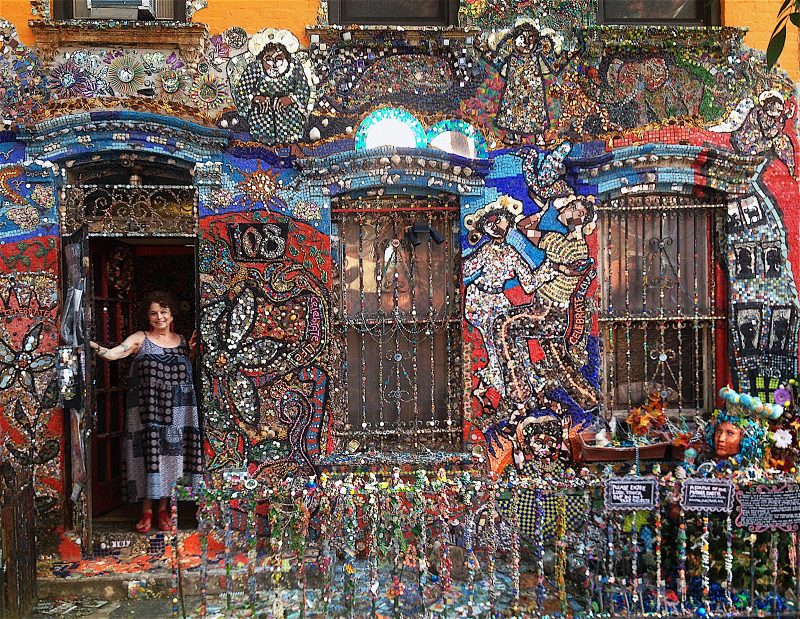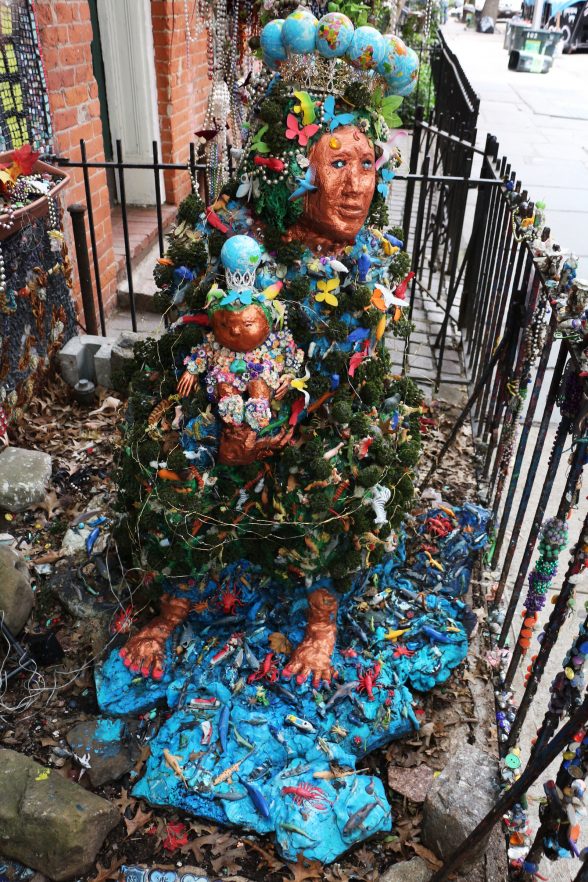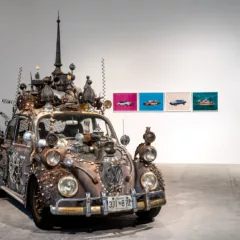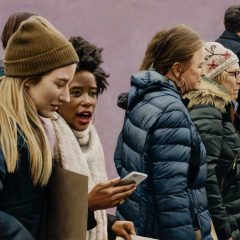Every week or so a box of broken tea cups, a bag of toy soldiers, a sack of plastic jewelry are set before the door of 108 Wyckoff Street in Brooklyn. Sometimes it’s a neighbor with a gift, a postman with a package, or strangers walking by emptying the odd knick knack out their pockets to contribute to the artwork that is a house in Brooklyn.
“A man sent me a heart locket and bracelet from California because his mother had lived in this building at the turn of the century,” recalled the artist Susan Gardner who lives and works in the Brooklyn townhouse. “He looked it up and found the address, he wanted me to use it for the house.”
Susan Gardner’s artwork is an ongoing mosaic installation that has slowly spread across the façade since September 11, 2001, when Gardner, like millions of New Yorkers found herself in a state of deep depression over the attacks at the World Trade Center, just across the East River.
“I thought the tilt of the world changed, and I didn’t want to be in my studio painting,” said Gardner. “It was a beautiful September month and…the world sucked. So as a rather depressed human, I decided to go outside, and just began gluing things to the side of my house.”

Gardner and her then-husband bought and moved into 108 Wyckoff, between Smith and Hoyt Streets, as young newlyweds, nearly 50 years ago. The house, she said, cost, $7,000. A trained painter and professor of art, she told me she had never worked with mosaics or tiles but it seemed simple enough.
“I just started with a layer of caulking glue and created a flower mosaic from some broken coffee cups and beads. It was pretty big – maybe four feet wide, located on the far side of the house.” But the flower looked a bit lonely, she said, so she added other things the next few days and “just kept going.” That was 16 years ago.
Outsider Artist
Today the “Mosaic House” is something of a local institution and a functioning collective memorial. The house appears in guidebooks, has its own website and holds the effluvia of perhaps thousands of people’s lives in a finely knitted sea of sparkle and sculptural poetry. A short film was even made of her house in 2012.
While many people reference Howard Finster’s Paradise Garden in Summerville, Georgia, as a model for Gardner’s Mosaic House, it doesn’t quite aim at the same sociological space said the artist. Gardner doesn’t have Finster’s obsessive religiosity nor do her texts contain the overt Christian adages Finster thought to be inspirational. But Gardner joked that she does share Finster’s “outsider artist” status. [Ed. Note: Philadelphia’s obsessive mosaic maker, Isaiah Zagar’s “Magic Gardens,” while not religious in intent, have the effect of inspiring and comforting people.]
“Well, yes, I guess I am an outsider artist,” said Gardner. “I work outside.”
Gardner immerses herself in the project almost every day, weather permitting – if the temperature stays above 65 degrees Fahrenheit (below that, the caulk is too thick and won’t permit the mosaic bits to adhere). The artist works largely on her own. Her husband, artist Bruce Brooks, is very supportive but does not participate in the mosaic project. Gardner says the imagery and macro design comes to her as she adds pieces one by one.
“As I worked I realized I had become everyone’s mosaic therapist – people came by, especially after 9/11, and everyone was talking about it, and over time that segued into their family stories, stories from the people from the projects, and yes, the one percenters on my block. It was kind of like having a conversation, a therapy group.”
Summers with Andy
Susan Gardner had a seemingly charmed childhood in the late 1940s, spending summers with her family in Springs, on Long Island, in the heart of the country’s laboratory for Abstract Expressionism. Jackson Pollock and Willem de Kooning were neighbors, as well as a young Andy Warhol, who worked with Gardner’s stepfather, a painter, doing shoe design illustrations. Warhol was a family friend.
“Andy gave us a cat called ‘Bloop,’” she recalled. “It was a Blue Point Siamese and really crazy – I wonder if Andy put something in his cat chow that was not kosher.”
East End summers didn’t make an artist out of Gardner, though. “It took me years to find out what I was and it wasn’t that crowd…it was perhaps more going to Antioch (college), in Ohio, then the most liberal school in the country.”
In 1969, Gardner’s Wycoff Street townhouse was in the middle of a rough and tumble Brooklyn neighborhood – which explains the super low price of the house at the time they bought it.
“When the house was first built, 100-plus years ago, almost everything around it was farmland,” she said. “The plumbing was on the outside, and the walls were thin. I understand it was a tenement for the American Indians who were constructing the bridges around New York – the high iron workers.”
Speaking of high work, Gardner said, “I fell off a ladder while headed up to the second floor but luckily caught myself on the way down.” None of her elaborate designs, though, have fallen off the house, but many have faded from the sun and weather. This summer Gardner has mostly completed her “Mother Earth” sculpture which sits on the ground directly in front of the house behind the front fence.
“As you might gather I’m not a Trump fan,” said Gardner, who posted an IMPEACH OUR RACIST PRES. sign on her door. “Especially when Trump started saying that global warming was a hoax.’ So I began a life-sized ‘Mother Earth’ this summer.”

The figure, seated on a green throne, sports a crown of globes and cradles a child; plastic toy fish swim about her feet in a pool of blue-colored cement. “It’s a way to talk to the kids,” she said. “See, she holds a baby… that’s Baby Earth – that’s you. You better take good care of your mother!” Then she added, “As a mother and former professor, I can tell you, we’re in deep shit.”
Recently a neighbor came by and handed Gardner a box and some drawings. “It was a huge carton of jewelry, ceramics, and a picture made by his little boy,” the artist recalled. “He said to me, ‘My son made this for me… perhaps you can use it for your house.’”
Gardner knows that while she has produced something unique and celebrated, real estate prices will undoubtedly outbid her two-decades long mosaic. “The work would probably be the first thing to go when I leave the house – in a box,” she joked. “Or they’d probably tear the whole house down, like a sand mandala… yes, I think that’s the way my mosaic will go.”









